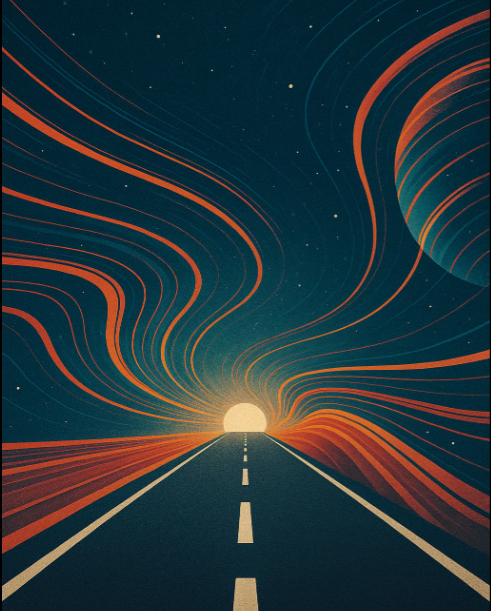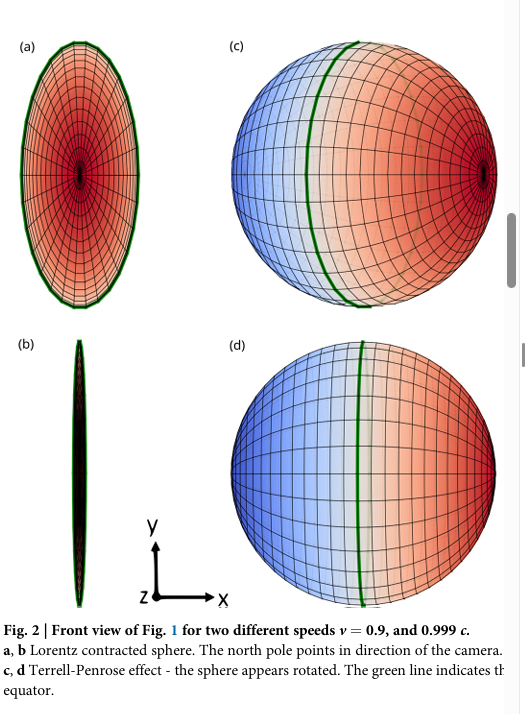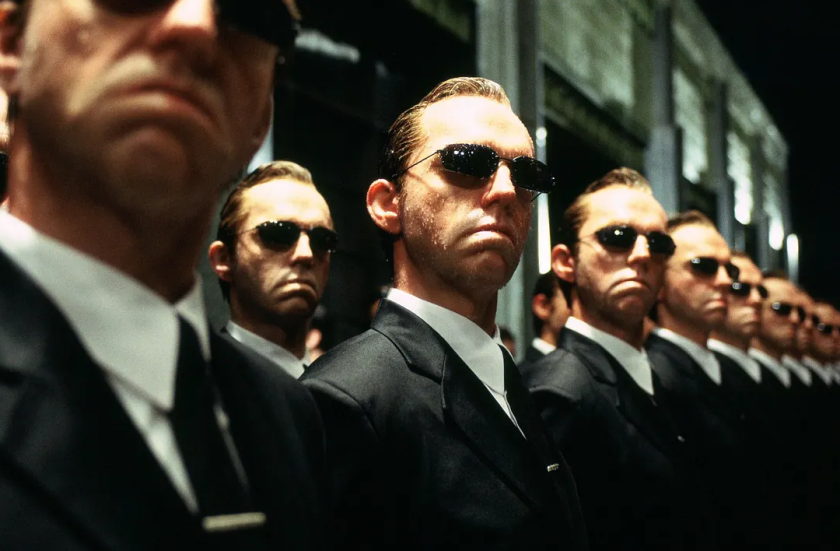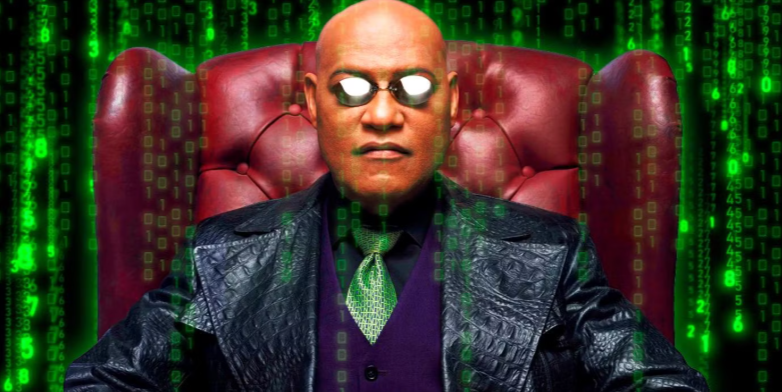
I’ll be honest, I have always thought ‘thought-experiments’ can never be visually demonstrated. And so, we would have to keep imagining intangible concepts in our minds, like, what happens to an object traveling at the speed of light, where time would seemingly stop and length would contract.
However, a group of researchers in Austria did something unbelievable. They visually demonstrated the Terrell-Penrose effect, a phenomenon predicted all the way back in 1959 but never actually observed.
What is the Terrell-Penrose Effect?
The Terrell-Penrose effect is a way to understand what we see when objects move very fast, almost as fast as light. It explains how objects can look stretched or distorted because of how light takes time to travel from different parts of the object to our eyes.
We’re all familiar with Einstein’s ideas about how fast-moving objects behave; they tend to appear shorter in the direction they’re traveling, especially as they approach the speed of light. This effect is known as Lorentz contraction, and it’s one of the surprising results of Einstein’s theory.
Speed Distorts Reality
Interestingly, it really causes objects to actually become physically shorter in a way we can measure. However, the reality is not such, what we see with our eyes or maybe a camera isn’t necessarily how things truly appear when moving that fast.
In the late 1950s, two scientists, James Terrell and Sir Roger Penrose, discovered that when an object moves past with a speed of light, it doesn’t look flattened or squashed , rather it appears to be rotated or cylindrical.
This happens because of the way light travels. When an object is moving quickly, different parts of it are at various distances from us, more specifically our eyes.
Light from the front of the object reaches us sooner, while light from the back takes longer to arrive. Since the object is moving while that light is traveling, it has moved to a new position by the time the light reaches us. Our brain (or camera) mixes all these pieces of light together into one image, making the object look slightly twisted or distorted.

The Speed of Light, Reversed
This is the hypothesis, in theory. Why? ‘Cause, we can’t launch spheres or cubes anywhere near the speed of light. Not even close. It has always been in theory or in simulation so far.
However, a research team led by Peter Schattschneider at TU Wien (Vienna University of Technology) decided to do something radical. They worked on a perspective, which is, what if we could make light behave slower?
Instead of speeding up an object to near-light speed, the team slowed down the “light”, which is, less than two meters per second. They used ultra-short laser pulses and a camera with blink-of-an-eye timing precision, that happens to be nearly 1 picosecond pulses and 300 picosecond exposures.
Visualizing Lorentz
They used a cube and a squashed sphere as test objects. To help in visualizing how these objects would appear as they zoom past at near-light speeds, they made a slowed-down version, quite similar to what Lorentz contraction predicts would happen at high speed.It’s like watching a high-speed chase in slow motion to catch every detail.
They took multiple images, each capturing a thin “slice” of reflected light from a different spot along the object’s imaginary path, and then stitched them all together into a single, synthesized image. When viewed in sequence, these snapshots became a video. And that’s when things got interesting.

Confirming Terrell and Penrose
The results were exactly what Terrell and Penrose predicted in the 50s:
- The squashed sphere looked like a full sphere again, but its top pole had slid sideways, like someone had nudged it while rotating it on a table.
- The shortened cube appeared twisted, as though it had spun a bit around its vertical axis. Its front stayed compressed, but the sides got stretched out, giving the illusion that the whole shape had rotated.
The results were amazing because they showed real pictures made by combining images taken with quick laser flashes and carefully moved objects.
Takeaway
This is the first time we’ve actually observed the Terrell-Penrose effect, rather than just visualising it mentally. The experiment helps us better understand the strange world of special relativity, something that’s usually really difficult to grasp.
The experiment is not limited to relativity alone, it also makes it possible to recreate other famous ideas from Einstein’s theories in real life. Imagine being able to see firsthand how events that seem to happen at the same time can actually be different depending on how you’re moving. Or to observe how a clock in motion appears to tick more slowly.
The idea that we are now closer to turning Einstein’s ideas from just drawings on a chalkboard into something we could actually record and watch happen, is damn exciting and profound at the same time. More than anything, it reminds me that physics isn’t just math on a board, it’s the geometry of what we actually see, twisted and stitched together by light itself.
Source: Technische Universität Wien



